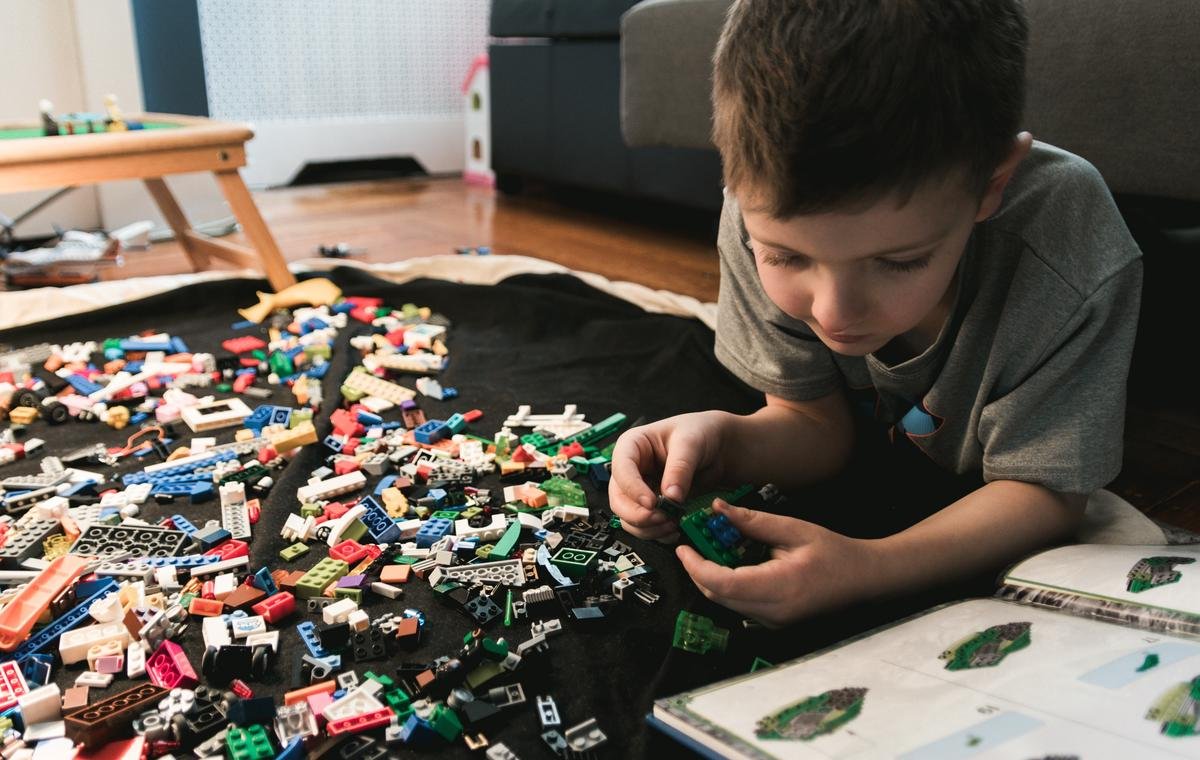
Autism, a developmental disorder that affects communication and behavior, is a condition that resonates intricately with every aspect of a person’s life – from early childhood signs to social interactions and cultural perceptions. With the complexities it presents, understanding and managing autism requires comprehensive resources, adaptive strategies, and perhaps most importantly, a supportive community. This piece aims to delve beneath the surface, breaking down the sociocultural dynamics of autism to facilitate a more inclusive and empathetic perspective.
Identifying Autism: Early Signs and Symptoms
Understanding Autism: Early Signs and Detection Strategies
Early detection of autism isn’t always straightforward. The path to diagnosis can often feel like a complicated maze. While there is no definitive “one-size-fits-all” symptom list, knowing some common signs can be helpful. This article aims to provide some rudimentary knowledge about the early signs of autism and actions to consider if a concern arises.
Autism, or Autism Spectrum Disorder (ASD), often unveils itself in a child’s behavior and development. Here’s a closer look at some common indicators:
- Communication Delays: Autism can be related to delays or regression in language or social communication skills. Children with ASD might not respond when their name is called or may show little interest in making eye contact.
- Repetitive Behaviors: Children with autism frequently exhibit repetitive behaviors. These can range from physical actions, such as hand-flapping, to being fixated on a specific interest.
- Social Interaction Difficulties: Struggling with basic human interaction is another sign. A child might appear disinterested in others, have difficulty understanding feelings, or struggle to engage in play with peers.
- Sensory Overload: Some kids with autism are extremely sensitive to things like touch, lights, or noise. Conversely, they may show a reduced response or even indifference to pain or extreme temperatures.
- Routine Fixation: Children with autism often become overly attached to routines. Any alteration in daily habits could lead to severe upset or meltdown.
- Unusual Body Movements: Keep an eye out for atypical postures, clumsiness, or odd walking patterns.
If a parent or caregiver notices these signs, it is crucial to consult a healthcare provider or a specialist in child development. It’s essential to remember that many children without autism also exhibit these behaviors, though usually not to the same extent or combination.
Once concerns are raised, screenings, such as the Modified Checklist for Autism in Toddlers (M-CHAT), or other developmental screening tests can be useful to assess if a child’s social and communicative development is on track.
If a child is diagnosed with autism, it’s not the end of the world. With the right strategies and interventions in place, many children with ASD grow up to live fulfilling lives. Early intervention programs, involving therapy and skills training, can improve outcomes tremendously. Most importantly, understanding and acceptance go a very long way.
Autism, like any other condition, comes with its fair share of challenges. But it also brings with it unique perspectives, talents, and gifts. By knowing the early signs, we can ensure our children are getting the guidance and support they need to blossom into their amazing selves.
Always remember, while stepping into this journey may feel overwhelming, no one is alone. Communities, such as ours, exist to provide comfort, shared experiences, and resources. After all, understanding and acceptance begin at home, and it begins with us.

Photo by clarktibbs on Unsplash
The Social Impact: Autism and Interaction
A Closer Look at Autism and Social Interaction: Strategies for Fostering Connection and Inclusion
Picking up from where the signs, detection, and early intervention has been established, a deeper dive into the social implications of autism and effective strategies for minimizing the impact is incredibly needed. Autism isn’t just a medical condition or a diagnosis, it’s part of an individual’s unique identity that colors their world, perspectives and interactions. Like a myriad of colors that paint the beautiful sky, so is every person with autism – no two experiences are the same.
One noticeable area that children with autism may encounter challenges is in social interaction. They may have difficulty interpreting nonverbal cues, understanding complex emotions, or initiating and carrying on a conversation. It’s not that they don’t want to engage. Sometimes, it can be just like having a conversation in a language they’re still getting a grasp of.
So how can we minimize these social difficulties encountered by individuals with autism? First, there’s no one-size-fits-all approach. Each autistic person is unique with their own strengths and challenges.
One effective approach is to teach ‘social scripts’. Much like learning lines for a play, social scripts provide a ‘blueprint’ for social interactions. They can offer a structured way for children with autism to engage in conversations. Practice this in a relaxed setting and ensure the scripts are flexible for various situations.
Modeling is another strategy to consider. As parents, caregivers, and teachers, displaying healthy social interactions helps children with autism understand how to appropriately respond in various social situations. Don’t underestimate the power of your example.
Peer interaction is also important. Foster an environment where interaction and social play can take place. This could be arranging playdates with understanding friends or finding inclusive social groups. This provides opportunities to practice social skills in a controlled and safe environment.
Technology can also be a huge ally. There are numerous apps and online tools designed to help children with autism develop their social skills in interactive, engaging ways. These tools often use visuals, which can be particularly effective for those who are visual learners.
Finally, embrace patience. Developing social skills takes time and practice for everyone, even more so for children with autism. Celebrate small victories and understand that progress may be slow but is never insignificant.
Education is paramount – and this extends to those around the person with autism. Schools, communities, and society at large can play integral roles by integrating autism education and awareness-building into their activities. Promoting understanding, acceptance, and inclusion not only supports autistic individuals but enriches everyone’s life by fostering appreciation for diversity and empathy.
Raising a child with autism can be both challenging and life-enriching. By arming oneself with knowledge and tools, nurturing an environment of love, patience, and structure, progress in social interaction can be achieved. Just remember, the aim is not to change the individual with autism to fit in, but to create a world where everyone, regardless of their differences, can comfortably exist and thrive.

Cultural Perceptions: Autism Across Various Cultures
Autism Perception Across Cultures and Societies
The perception of autism vastly varies globally, often influenced by differing cultural, social, and historical contexts. Each society’s understanding of autism affects how it is diagnosed, treated, and seen by the community at large.
While some cultures attribute autistic symptoms to spiritual or supernatural causes, others understand them as biological or psychological. In certain societies, those with autism are seen as special or gifted, whereas in others, they are seen as subjects of stigma and misunderstanding. These varying cultural perceptions significantly impact the acceptance, resources, and support received by the autistic community.
For instance, in many Western countries, there’s a stronger emphasis on individual needs and rights. This cultural perspective facilitates comprehensive legislation and services to support autistic individuals in education, employment, and social participation. Yet, the battle against stigmatization continues, despite the relatively higher awareness. Misconceptions about autism, like it being a result of poor parenting or vaccines, persist even in these societies.
On the contrary, in many Eastern societies, autism is often perceived with a greater degree of stigma. This can be partly attributed to the predominant family values and emphasis on conformity in these societies. In such places, social stigma could make families reluctant to seek diagnosis or support, hindering the autistic individual’s ability to receive vital assistance.
Tribal societies, such as those in Africa, may view autism as a sign of ancestral disfavor. This belief might lead to autistic children being ostracized or even abandoned. Lack of access to relevant information and healthcare further exacerbates this situation.
In recent years, many societies have seen a shift in understanding autism. Global autism advocacy and an increasing amount of research have led to greater awareness and acceptance. For example, South Korea has made strides toward comprehensive autism services, thanks to constructive government policies and robust autism advocacy.
Nonetheless, large disparities in availability and access to autism services persist worldwide. High-income nations have more autism resources than low-income ones. Even within nations, racial and socioeconomic disparities often dictate who can access autism diagnoses and services.
All societies face their respective challenges related to autism perception and treatment. Understanding these global perspectives can provide valuable insights into better supporting autistic individuals. Regardless of cultural backgrounds, viewing those with autism as valuable members of society who offer unique perspectives is essential.
Promoting cultural competence in autism diagnosis, treatment, and research is crucial for effective and equitable autism services. This includes respecting individuals with autism’s diverse experiences, values, and beliefs. Further, having locally relevant services, policies, and research can help cater to the specific needs and challenges of each society.
Autism, at the end of the day, does not discriminate – it’s present in all cultures, races, and social groups. The global perception of autism is a reflection of society’s collective consciousness. Therefore, it’s up to each one of us to dispel misconceptions, raise awareness, and strive towards creating an inclusive world for all, regardless of their neurological makeup.

Resources and Strategies: Empowering Parents and Families
Onwards in the journey through autism parenting, we stumble upon a wealth of resources, strategies and coping mechanisms targeted to both parents and families dealing with the seemingly impervious wrap of autism. It’s all about knowledge- acquisition, application, and kindness towards each differing experience. It’s also about spotlighting strength and resilience, not just the challenges or paths less traveled — there’s so much more to this story, and it’s a story well worth sharing.
While dealing with autism ushers in a multitude of challenges, it also offers an array of opportunities to grow and navigate life differently — one that’s more empathetic, nurturing, and accommodating. So, what are these bounty of resources and strategies? Let’s delve in.
Education is integral to the journey. A wealth of information can be gathered from books, seminars, webinars, online portals, and many more platforms that strive to educate and empower parents going through this journey. When armed with knowledge, parents can debunk myths and misconceptions channeling their energy into the right course of action.
Healthcare support channels, such as therapists, specialists, support groups, and helplines, are also effective resources. Specialized therapies like ABA (Applied Behavior Analysis), music therapy, and occupational therapy have shown promising results in helping autistic children navigate life around them.
Support groups and communities dedicated to sharing, caring, and learning are empowering tools available both online and offline. They make you feel less isolated, and give you an avenue to lean into. They help you become more adept at understanding and advocating for your child’s needs.
Further, schools centered around special needs education make a massive difference. They are designed to cater to the unique needs of autism, helping children cultivate social skills, academic prowess and most importantly, self-esteem.
Technology has proven to be a game changer. With apps and software dedicated to helping children with autism learn and grow, it’s a tool that fits right into the context of a digital age kid, making learning easy and fun!
Government sporting policies attuned to autism needs also do their fair share in empowering parents and families. Complete with financial aid, special considerations, and a moves to promote inclusivity, they help in making the journey easier.
Moving beyond society’s label of ‘different’ and the commonplace misunderstanding, embracing the – dare it be said – beauty of autism is pivotal. While autism brings in a different world-view, it does not equate to lesser. Autistic individuals can excel in areas with their unique outlook and skillset. This cultural paradigm shift is what we need, and it starts at home.
In conclusion, autism parenting may seem like a long-winding journey laden with challenges, but it is just as much about new perspectives, patience, understanding, empowerment, and love. Balancing stress and getting through the tough times involves finding resources and strategies that work for your family. Populating your support network with understanding friends, family, and professionals can make a world of difference to your resilience and lived experience. Above all else, remind yourself and those around you, in this journey, you are not alone.

Inspiring Stories: Real-life Experiences with Autism
Moving ahead, there are countless inspirational stories about families and individuals navigating the waters of autism victoriously. One such story is that of Jake Barnett, who was diagnosed with autism at two. At first, Jake lost his ability to speak and was believed to have a cognitive impairment. However, his parents refused to believe that his future was dim and provided home-schooling, focusing on areas he was passionate about. By the age of twelve, Jake enrolled in a local university studying astrophysics. At 15, he was a published physicist.
In another inspiring tale, Carly Fleischmann, a non-verbal autistic young lady, found her voice through technology. Predominantly communicating through her computer, Carly has become an author, talk show host, and a source of incredible inspiration for many. Her groundbreaking story has shifted perspectives towards non-verbal autism, showcasing that every voice is worthy of being heard, even if it isn’t always articulated in words.
Furthermore, Dr. Temple Grandin, who is now a famous scientist and author, sheds light on the potential of autistic individuals. Despite her autism, or rather because of it, she revolutionized the livestock industry. Temple views the world differently, and her unique perspective allowed her to develop systems and practices that are now standard in the industry. Her story serves as a beacon of hope, showing that everyone indeed has a gift that the world needs.
In the mighty battles families face daily, small victories become monumental. A loving pat, an articulated word, a recognition of a familiar face- they all become heartwarming tales of progress. Parents all over the world have started supportive networks, sharing their experiences and lessons, helping each other in this challenging journey. From sharing tips on managing sensory overload to finding the right therapy or intervention program, these communities support each other tirelessly.
Then there are the countless educators working meticulously to develop innovative education models that cater to the needs of autistic children. Many schools, near and far, work towards providing a loving and inclusive environment where these children can grow, learn, and thrive.
There’s no denying that technology has also played a transformational role. From handy communication apps to interactive educational games, technology has proved to be a reliable companion offering invaluable help for both parents and educators.
Lastl, families advocating for their loved ones have led to critical advancements in government policies; their relentless efforts have paved the way for better support systems and more inclusive societies. Whether it’s fighting for educational rights or healthcare facilities, these advocates continue to inspire millions.
Indeed, the journey of managing autism successfully is not a solitary one. It is a collective stride that includes medical professionals, educators, families, and communities that lend a supportive hand, resources, and boundless love. And though these unsung heroes face untold struggles, their lives are woven with inspiring stories of resilience, hope, and unconditional love. Autism thus becomes not a condition but a different hue in the wide spectrum of human existence, a hue that’s beautiful, idiosyncratic, and profoundly inspiring. In their stories, we truly realize what it means to embrace the beauty of diverse minds, accept the unique, and celebrate what makes us distinct yet connected.

The complexities of autism are vast and varied, but so too are its stories of resilience, adaptability, and triumph. Facing autism, whether personally or as a parent or caregiver, can be a challenge – but with a collective effort to understand, to adapt, and to support, we can decay stereotypes and foster an environment where everyone, regardless of their neurological composition, can thrive. Let’s continue to share these stories, to share in their wisdom, and to create more channels and platforms where we can educate and inspire, crafting an inclusive world sewn with threads of empathy and understanding.




